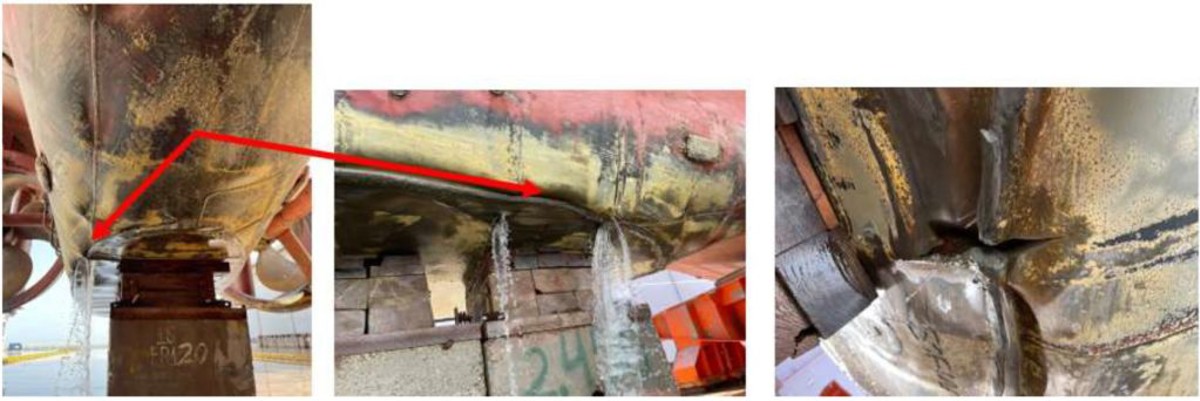Vessel collision with underwater objects in harbour
- Safety Flash
- Published on 23 November 2022
- Generated on 1 December 2025
- IMCA SF 26/22
- 2 minute read
Jump to:
A vessel suffered underwater damage to the hull when it collided with uncharted objects in the harbour.
What happened?
The incident occurred after completion of cargo operations when an AHTS vessel cast off from the quayside for departure. While proceeding towards the harbour channel and leaving the mooring buoys on its port side, crew on the vessel felt a blow to the vessel. Immediately the crew went to check for damage and found out the vessel was holed – seawater was coming in. The authorities were informed and the vessel returned to the quayside. The vessel had to be dry-docked for repairs.
What went wrong?
The vessel collided with uncharted underwater harbour pilings.

What were the causes?
- There were no proper navigational markings – the piles were not marked with floating buoys.
- The most recently updated charts for the harbour, provided by the authorities six months before this incident, did not reflect the exact co-ordinates of the underwater piles.
- The pile height and the water depth information provided on the chart did not match the “under keel clearance” calculation done by the bridge crew on the vessel.
Additionally, our member noted that:
- There was a warning in place: a recent local notice to mariners was given with general coordinates for an area in the harbour without any coordinates identifying the underwater piles. The notice did warn all vessels to be “careful in this area” but did not restrict entry to it.
- Comparison of the coordinates where the collision took place, with underwater pile coordinates subsequently obtained by the company, confirmed absolutely that the vessel hit one of the piles.
Recommendations
- Bridge crew should calculate “under keel clearance” considering draft versus water depth, height of subsea objects, vessel stability, weather conditions and squat effects when navigating through a potentially hazardous area.
- If possible, avoid navigating through areas for which notices to mariners or similar warnings are in place. If there is no option but to do so, it may be appropriate to seek shore-side management approval.
Related Safety Flashes
-
IMCA SF 13/20
15 April 2020
-
IMCA SF 10/18
9 May 2018
-
-
IMCA SF 13/15
21 September 2015
IMCA Safety Flashes summarise key safety matters and incidents, allowing lessons to be more easily learnt for the benefit of the entire offshore industry.
The effectiveness of the IMCA Safety Flash system depends on the industry sharing information and so avoiding repeat incidents. Incidents are classified according to IOGP's Life Saving Rules.
All information is anonymised or sanitised, as appropriate, and warnings for graphic content included where possible.
IMCA makes every effort to ensure both the accuracy and reliability of the information shared, but is not be liable for any guidance and/or recommendation and/or statement herein contained.
The information contained in this document does not fulfil or replace any individual's or Member's legal, regulatory or other duties or obligations in respect of their operations. Individuals and Members remain solely responsible for the safe, lawful and proper conduct of their operations.
Share your safety incidents with IMCA online. Sign-up to receive Safety Flashes straight to your email.